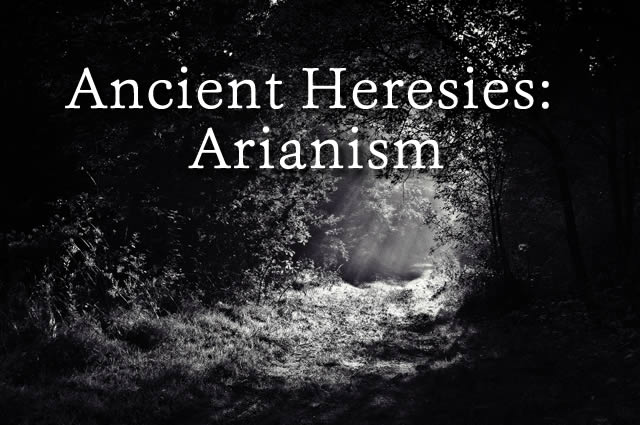In a previous issue of The News & Views the origins and nature of heretical movements was discussed. This is the first of a series of articles that will discuss specific heresies.
Arianism was first promulgated by Arius, Presbyter of Alexandria, in the Fourth century AD. In his motivation to understand the nature of God Arius began with the Gnostic assumptions common to his time and place.
One of the common assumptions of Gnosticism is that God, Who is spirit, is utterly holy but the material creation is utterly unholy. Gnostics held that these two could not come into direct contact.
Therefore, when God wanted a “savior” for the world His solution was an “emanation” from Himself, that was sufficiently distant from Him that is wasn’t actually Him that made contact with the unholy world. This Gnostic assumption logically required that Jesus could not be fully God. He must therefore be a created god.
This view, minus the Gnostic assumptions, is held today by two modern cults, the Jehovah’s Witnesses and all their splinter groups, and The Way International.
Arianism was one reaction to the orthodox doctrine of the Trinity. Another heresy in the theological stew of that time was the Sabellian, or modalist, view of the Three in One nature of God. The Trinity is a mystery and therefore generates attempts to solve the mystery.
The Sabellians concluded that the Three Persons were simply three manifestations of One Person. This is a denial of the Unity of God in favor of the Oneness of God. The Arians were at the other end by denying the Oneness of God in favor of the three. The Son and Holy Spirit were held by many Arians to be lesser deities, and hence, ceased to be monotheistic.
The Trinity was the view of God held by the vast majority of believers since the time of the Apostles. Various heresies came along to challenge orthodoxy but did not have the staying power of truth itself. When Arianism came on the scene it was quite successful in capturing the belief of many people.
This division also came at a time when a new Roman Emperor, Constantine, was trying to unify his empire and religious division was one of the large problems he wanted resolved. This set the stage for some great theological debates between Arius and Athanasius, Bishop of Alexandria. At different times Arius was in the ascendancy and had the favor of Constantine who sent Athanasius into exile. At another time it was the reverse. It finally came to the Church Council at Nicaea and the Nicene Creed adopted in 325 AD. This creed rejected Arianism and affirmed the Trinitarian orthodoxy.
Arianism divided the Church for half a century. After its defeat at the Nicene Council it faded in influence. Today the Jehovah’s Witnesses are the chief proponents of the Arian view that Jesus is a created, or lesser, god. The Way International is marginally Arian, but go further than either Arius or the Watchtower Society. They hold that Jesus did not pre-exist his earthly life, nor do they affirm the lesser deity of Jesus.
The Bible is clear that Jesus is fully God with the Father and Holy Spirit. Nothing could be more explicit than John 1:1, which says, “In the beginning was the Word (Jesus eternally with the Father in eternity past) and the Word was with God (Father and Holy Spirit, two Persons of the Trinity, and showing plurality of Persons in the Godhead) and the Word was God (deity, of the same divine substance with the Father).” (parenthesis mine)






